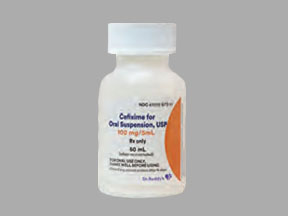
Cefixime Coupons & Savings Card – Discount Prices from $56.35
Generic for: Suprax
My prescription
Edit
50ML of 100MG/5ML, Cefixime (1 Bottle)
Select pharmacy

CVS
$59.40
COUPON PRICE
Walgreens
$56.35
COUPON PRICE
Albertsons
$65.18
COUPON PRICE
Walmart
$173.18
COUPON PRICECefixime savings card
Show this card to your pharmacist
Walgreens
$56.35
BIN
ID
PCN
GRP
015995
LHEV583340
GDC
GDRX
Powered by
More prescriptions for urinary tract infection
More prescriptions for urinary tract infection
Price history for Suprax (brand) & Cefixime (generic)
1 Bottle, 50ML of 100MG/5ML
Average retail price for Suprax
Average retail price for Cefixime
Average SaveHealth price for Cefixime
Our price history data is based on aggregated prescription data collected from participating pharmacies in America. Our prescription data updates daily to reflect the latest price changes. If you notice a missing data point, it means there wasn't sufficient data available to generate a monetary value for that date.
We analyzed Cefixime prices for (50ML of 100MG/5ML, 1 Bottle) over the last 12 months. The average retail price was $393.95, while the average price using the SaveHealth discount card was $126.16. That's a savings of approximately 67.98% when using our Cefixime coupon.
Compared to the generic version, Suprax had an average price of $292.32 over the same time period. With the SaveHealth savings card, Cefixime is 56.84% cheaper on average than Suprax.
*Retail prices are based on pharmacy claims data, and may not be accurate when we don't have enough claims.
Cefixime dosage forms
Dosage Quantity Price from Per unit 50ML of 100MG/5ML 1 Bottle $59.40 $59.40 50ML of 100MG/5ML 2 Bottles $100.80 $50.40 50ML of 100MG/5ML 3 Bottles $142.20 $47.40 50ML of 200MG/5ML 1 Bottle $108.05 $108.05 50ML of 200MG/5ML 2 Bottles $198.10 $99.05 50ML of 200MG/5ML 3 Bottles $288.15 $96.05
| Dosage | Quantity | Price from | Per unit |
|---|---|---|---|
| 50ML of 100MG/5ML | 1 Bottle | $59.40 | $59.40 |
| 50ML of 100MG/5ML | 2 Bottles | $100.80 | $50.40 |
| 50ML of 100MG/5ML | 3 Bottles | $142.20 | $47.40 |
| 50ML of 200MG/5ML | 1 Bottle | $108.05 | $108.05 |
| 50ML of 200MG/5ML | 2 Bottles | $198.10 | $99.05 |
| 50ML of 200MG/5ML | 3 Bottles | $288.15 | $96.05 |
Cefixime Warnings
This document provides crucial safety information regarding the use of cefixime (Suprax). It is important to understand and consider these warnings before starting the medication. Always consult with your healthcare provider if you have any questions or concerns.
Allergic Reactions: Inform your healthcare provider if you have experienced allergic reactions to penicillin-type or cephalosporin antibiotics, characterized by symptoms such as difficulty breathing or facial swelling. Cefixime (Suprax) may not be suitable for you. If such symptoms occur after starting the medication, seek immediate medical help.
C. Difficile Diarrhea: There is a rare risk of developing a serious bacterial infection causing severe diarrhea when taking antibiotics like cefixime (Suprax). This can occur up to two months after completing the antibiotic course. Contact your healthcare provider if you experience severe, watery diarrhea.
Kidney Issues: Cefixime (Suprax) is excreted through the kidneys. Individuals with impaired kidney function or those on dialysis are at risk of increased drug accumulation, leading to potential side effects. Your healthcare provider will adjust your dosage based on kidney function tests.
Increased Bleeding Risk: Cefixime (Suprax) may infrequently affect blood clotting. If you are using blood thinners, your dosage might need adjustment. Seek medical attention if you experience unusual bleeding or if wounds take longer to heal.
Drug-Resistant Bacteria: Use cefixime (Suprax) strictly for bacterial infections. Misuse can contribute to the development of drug-resistant bacteria, complicating future treatments.
Phenylketonuria (PKU) Concerns: The chewable form of this medication contains phenylalanine, which can be harmful to individuals with PKU. Discuss with your healthcare provider the safety of using this formulation if you or your child have PKU.
These warnings are intended to guide safe usage of cefixime (Suprax), ensuring effective treatment while minimizing potential risks. Always follow your healthcare provider's instructions and report any adverse effects promptly.
Cefixime Side Effects
Common side effects:
- Stomach upset
- Diarrhea
- Nausea
- Gas
- Headache
- Dizziness
Less common but important to monitor:
- Oral thrush
- New yeast infection
- Abnormal liver or kidney function
- Seizures
- Abnormal blood cell counts
- Genital itching and inflammation
Serious side effects:
- Severe stomach or abdominal pain
- Persistent nausea or vomiting
- Yellowing of the skin or eyes
- Dark urine
- Unusual tiredness
- Persistent sore throat
- Fever
- Easy bruising or bleeding
- Changes in urine output
- Mental changes such as confusion
- Intestinal infection caused by C. difficile
- Rash
- Itching
- Swelling of the face, tongue, or throat
- Severe dizziness
- Difficulty breathing
Cefixime Interactions
Interactions with high risk of serious adverse effects and should be avoided:
Interactions with moderate risk that may require dose adjustment, closer monitoring, or timing changes:
- Cholera Vaccine, Live
- Desogestrel
- Dienogest
- Drospirenone
- Estradiol
- Ethinyl Estradiol
- Ethynodiol
- Gestodene
- Levonorgestrel
- Mestranol
- Nomegestrol
- Norethindrone
- Norgestimate
- Norgestrel
